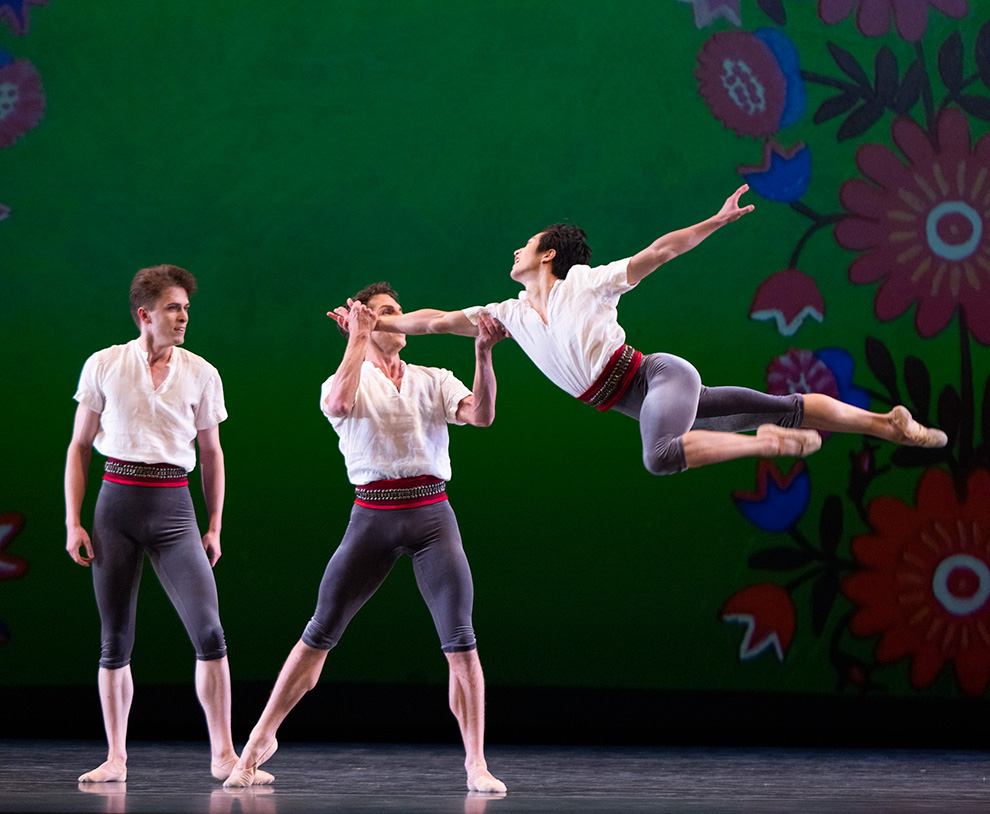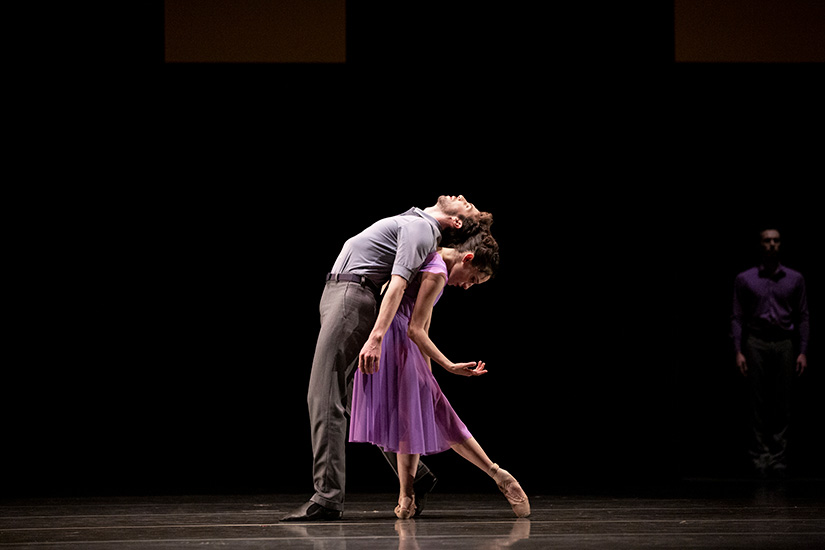Artistic Director’s Notebook: The Window, Wartime Elegy, Love and Loss
Dear Friends,
When we think of storytelling, we think of words – spoken, signed, sung, or written. Recall a favorite novel or poem. Words illuminate plots and plays bringing them to vivid existence. How does dance tell a tale without words? Classical ballets have relied on two methods of communication – mime and program notes. I confess, I have trouble getting through program notes before the ballet begins. I’ve been a fan of mime since my student days as the Nutcracker Prince, but I also realize mime can be stilted, and does anyone really know what the little prince is saying so frantically at the top of Act II?
Storytelling has changed in ballet. A new generation of choreographers and dancers are presenting abstract works imbued with interaction and emotion. The cadence of movements conveys eloquence. Limbs embody articulation. We read bodies in correlation with music as story. And these narratives may be different for each viewer, not penned in by program notes. Each of the three works you see in this program tells a tale that unfolds somewhere in the ether between choreographer, musicians, dancers, and you.

In Wartime Elegy, Alexei Ratmansky introduces us to the people of Ukraine. Alexei was raised in Ukraine and started his career in Kyiv. His family is still there. His heart is too. The impetus for the creation of this work was the war and devastation his people are experiencing at this time. This is not just a piece about tragedy. Stories, dances, humor, and the strength of community are evident throughout. The jovial voices of villagers and the expressive artwork of Matvei Vaisberg and Maria Prymachenko add immeasurably to the experience. The emotions presented are familiar. We instantly connect to the laughter, exuberance, and loss, recognizing our common bonds.
Dani Rowe adapted a story about three individuals whose lives are intertwined through passing years, and yet one character has never met the other two. It is a fascinating distillation of wordless communication, and dance is the ideal language for the telling. Dani relied on dramaturg Garen Scribner to adopt a storyteller’s lens. The Window has a cast of three, and each dancer contributed to the process with Dani’s eye guiding throughout. Emma Kingsbury’s costume designs reference time, place, and mood, while Shannon Rugani’s commissioned score plays like a page-turner informing dialogue and dance with each note.
Donald Byrd has never shied away from raw emotion. In 2019 he created the abstract work Love and Loss for PNB to the percussive and poignant score by Emmanuel Witzthum. Doris Black’s costume designs offer a crisp palette pulled from an evening sky, and Randall Chiarelli’s scenic and lighting design create timeless sleekness. In the work, Donald offers us elements of plot without a script. It is ours to write, and what we see may or may not match what Donald envisioned when creating. Dancers’ connections to one another are so deep, we can almost see a cord. Separations are equally powerful as that cord is cut. Even in an abstract creation, we see Donald’s skill in storytelling.

As the houselights fade to black and the well-deserved applause for our orchestra and conductor finally subside, open yourself to the stories you are about to see, and understand the reading is individual and your take is yours alone. Dance is a language that is interactive and completely engaging. Let the stories begin.
Kind regards,

Photo credits: Featured Photo – PNB Company dancers in Donald Byrd’s Love and Loss, photo © Angela Sterling. Luther DeMyer, Lucien Postlewaite, and Kuu Sakuragi in Alexei Ratmansky’s Wartime Elegy, photo © Angela Sterling. Leta Biasucci and Lucien Postlewaite in Donald Byrd’s Love and Loss, photo © Angela Sterling.





